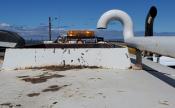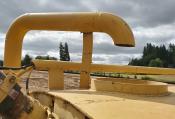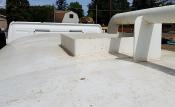Hydrant Meter versus Hydrant Permit
Tualatin Valley Water District (TVWD) offers two options for temporarily access water from hydrants in our service area.
Hydrant Meter Backflow Assemblies: A 3-inch hydrant meter with backflow assembly is installed and locked by TVWD staff to a hydrant on or near a project site. The selected hydrant must first be approved for bulk water access by TVWD Engineering and Water Resources staff to ensure the system hydraulics meet certain criteria to minimize turbidity in the surrounding customer area. Typical loan/usage period is up to six months. During this time, efforts to find alternate water sourcing, such as metered water service, should made for projects running longer than six months.
Hydrant Permits: TVWD must inspect and approve customer water tank trucks/trailers to access predetermined hydrants throughout TVWD's service area. These hydrants are designated with green painted caps/tops. Approved tanks will have a proper air gap to minimize the risk of a cross connection. An approved air gap will have a physical separation between the free flowing discharge end of a potable water supply pipeline and an open or non-pressure receiving vessel/tank. The approved air-gap separation shall be as least twice the diameter of the supply pipe measured vertically above the overflow rim of the tank. A 2-1/2-inch fill pipe will require, at minimum, a 5-inch distance from the very end of the fill pipe to the highest portion of the fill tank opening. Each water tank truck or trailer must also possess a hydrant wrench and a chapman (gate) valve. TVWD hydrant permits allow unlimited water access for a 12-month period only. It is the responsibility of the permit holder to reapply for a new permit upon expiration.

Photo of an approved air gap. Distance separation between the bottom of the fill pipe and the top of the tank's spill rim is at least twice the diameter of the fill pipe.

Photo of an approved air gap. Distance separation between the bottom of the fill pipe and the top of the tank's spill rim is at least twice the diameter of the fill pipe.




